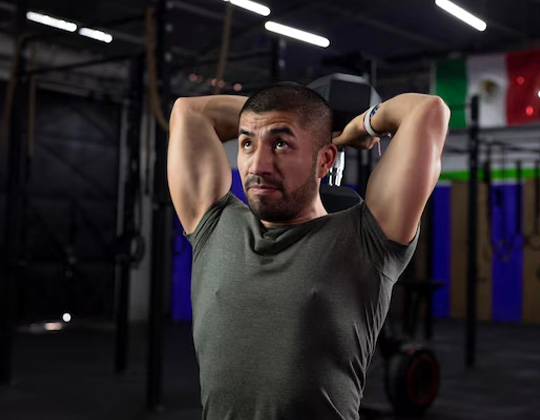
Instructions:
Key Points & Tips:
Benefits:
Muscle Action & Joint Action:
Concentric (Pushing Up):
○ Elbow: Extension
○ Shoulder: Flexion
Eccentric (Lowering Down):
○ Elbow: Flexion
○ Shoulder: Extension
Form Focus:

Exercise: Bench Dips
Type: Compound Exercise
Primary Muscles Targeted: Triceps Brachii
Secondary Muscles Targeted: Anterior Deltoids, Pectoralis Major
Equipment: Flat Bench or Sturdy Surface
Level: Beginner to Intermediate
Muscle Roles:
Instructions:
Key Points & Tips:
Benefits:
Muscle Action & Joint Action:
Concentric (Extending Arms):
○ Elbow: Extension
Eccentric (Lowering Weight):
○ Elbow: Flexion
Form Focus:

Exercise: Lying Triceps Extensions (Skull Crushers)
Type: Isolation Exercise
Primary Muscles Targeted: Triceps Brachii
Secondary Muscles Targeted: None (Primarily Isolation)
Equipment: Barbell (EZ-Bar preferred) or Dumbbells
Level: Intermediate
Muscle Roles:
Instructions:
Key Points & Tips:
Benefits:
Muscle Action & Joint Action:
Concentric (Extending Arms):
○ Elbow: Extension
Eccentric (Lowering Weight):
○ Elbow: Flexion
Form Focus:

Exercise: Overhead Triceps Extension
Type: Isolation Exercise
Primary Muscles Targeted: Triceps Brachii
Secondary Muscles Targeted: None (Primarily Isolation)
Equipment: Dumbbell, EZ-Bar, or Cable with Rope Attachment
Level: Beginner to Advanced
Muscle Roles:
Instructions:
Key Points & Tips:
Benefits:
Muscle Action & Joint Action:
Concentric (Extending Arm):
○ Elbow: Extension
Eccentric (Lowering Dumbbell):
○ Elbow: Flexion
Form Focus:

Exercise: One-Arm Triceps Extension
Type: Isolation Exercise
Primary Muscles Targeted: Triceps Brachii
Secondary Muscles Targeted: None (Primarily Isolation)
Equipment: Dumbbell
Level: Beginner to Intermediate
Muscle Roles:
Instructions:
Key Points & Tips:
Benefits:
Muscle Action & Joint Action:
Concentric (Pushing Down):
○ Elbow: Extension
Eccentric (Returning to Start):
○ Elbow: Flexion
Form Focus:

Exercise: Triceps Pushdowns
Type: Isolation Exercise
Primary Muscles Targeted: Triceps Brachii
Secondary Muscles Targeted: None (Primarily Isolation)
Equipment: Cable Machine with Straight Bar, Rope, or V-Bar Attachment
Level: Beginner to Advanced
Muscle Roles:
Instructions:
straightened.
Key Points & Tips:
Benefits:
Muscle Action & Joint Action:
Concentric (Pushing Down):
Eccentric (Returning Up):
Form Focus:

Exercise: Reverse-Grip Triceps Pushdowns
Type: Isolation Exercise
Primary Muscles Targeted: Triceps Brachii (Emphasis on Medial Head)
Secondary Muscles Targeted: Forearm Flexors (Stabilization)
Equipment: Cable Machine, Straight Bar or EZ Bar Attachment
Level: Beginner to Advanced
Muscle Roles:
Instructions:
Key Points & Tips:
Benefits:
Muscle Action & Joint Action:
Concentric (Pushing Down):
Eccentric (Returning Up):
Form Focus:

Exercise: V-Bar Triceps Pushdowns
Type: Isolation Exercise
Primary Muscles Targeted: Triceps Brachii
Secondary Muscles Targeted: Forearm Muscles (Stabilization)
Equipment: Cable Machine, V-Bar Attachment
Level: Beginner to Advanced
Muscle Roles:
Instructions:
Key Points & Tips:
Benefits:
Muscle Action & Joint Action:
Concentric (Pushing Up):
○ Elbow: Extension
○ Shoulder: Flexion
Eccentric (Lowering Down):
○ Elbow: Flexion
○ Shoulder: Extension
Form Focus:
FOREARMS

Exercise: Dips
Type: Compound Exercise
Primary Muscles Targeted: Triceps Brachii, Lower Pectoralis Major (Chest) Secondary Muscles Targeted: Anterior Deltoids (Front Delts)
Equipment: Parallel Bars or Dip Station
Level: Intermediate to Advanced
Muscle Roles:
Instructions:
Key Points & Tips:
Benefits:
Muscle Action & Joint Action:
Concentric (Curling Up):
Eccentric (Lowering Down):
Form Focus:

Exercise: Wrist Curls
Type: Isolation Exercise
Primary Muscles Targeted: Flexor Carpi Radialis, Flexor Carpi Ulnaris (Forearm Flexors) Secondary Muscles Targeted: Palmaris Longus, Pronator Teres
Equipment: Barbell, Dumbbells, or Cable Machine
Level: Beginner to Advanced
Muscle Roles:
Instructions:
Key Points & Tips:
Benefits:
Muscle Action & Joint Action:
Concentric (Lifting Up):
Eccentric (Lowering Down):
Form Focus:

Exercise: Reverse Wrist Curls
Type: Isolation Exercise
Primary Muscles Targeted: Extensor Carpi Radialis, Extensor Carpi Ulnaris (Forearm Extensors) Secondary Muscles Targeted: Brachioradialis
Equipment: Barbell, Dumbbells, or Cable Machine
Level: Beginner to Advanced
Muscle Roles:
Instructions:
Key Points & Tips:
Benefits:
Muscle Action & Joint Action:
Concentric (Lifting):
○ Elbow: Flexion
Eccentric (Lowering):
○ Elbow: Extension
Form Focus:

Exercise: Reverse Curls
Type: Isolation Exercise
Primary Muscles Targeted: Brachialis, Brachioradialis
Secondary Muscles Targeted: Biceps Brachii (Short & Long Head), Forearm Extensors Equipment: Barbell, EZ Curl Bar, or Dumbbells
Level: Beginner to Advanced
Muscle Roles: